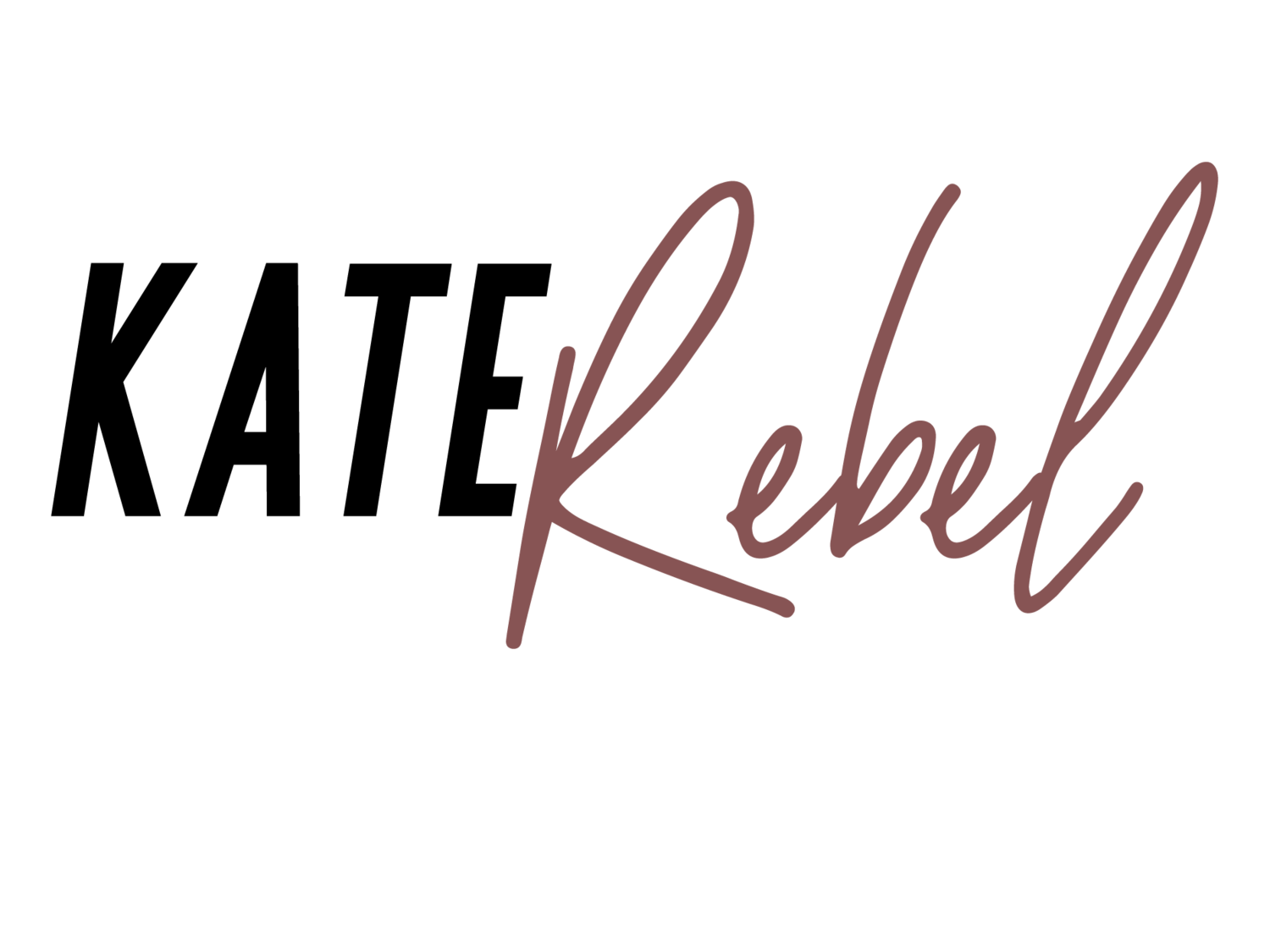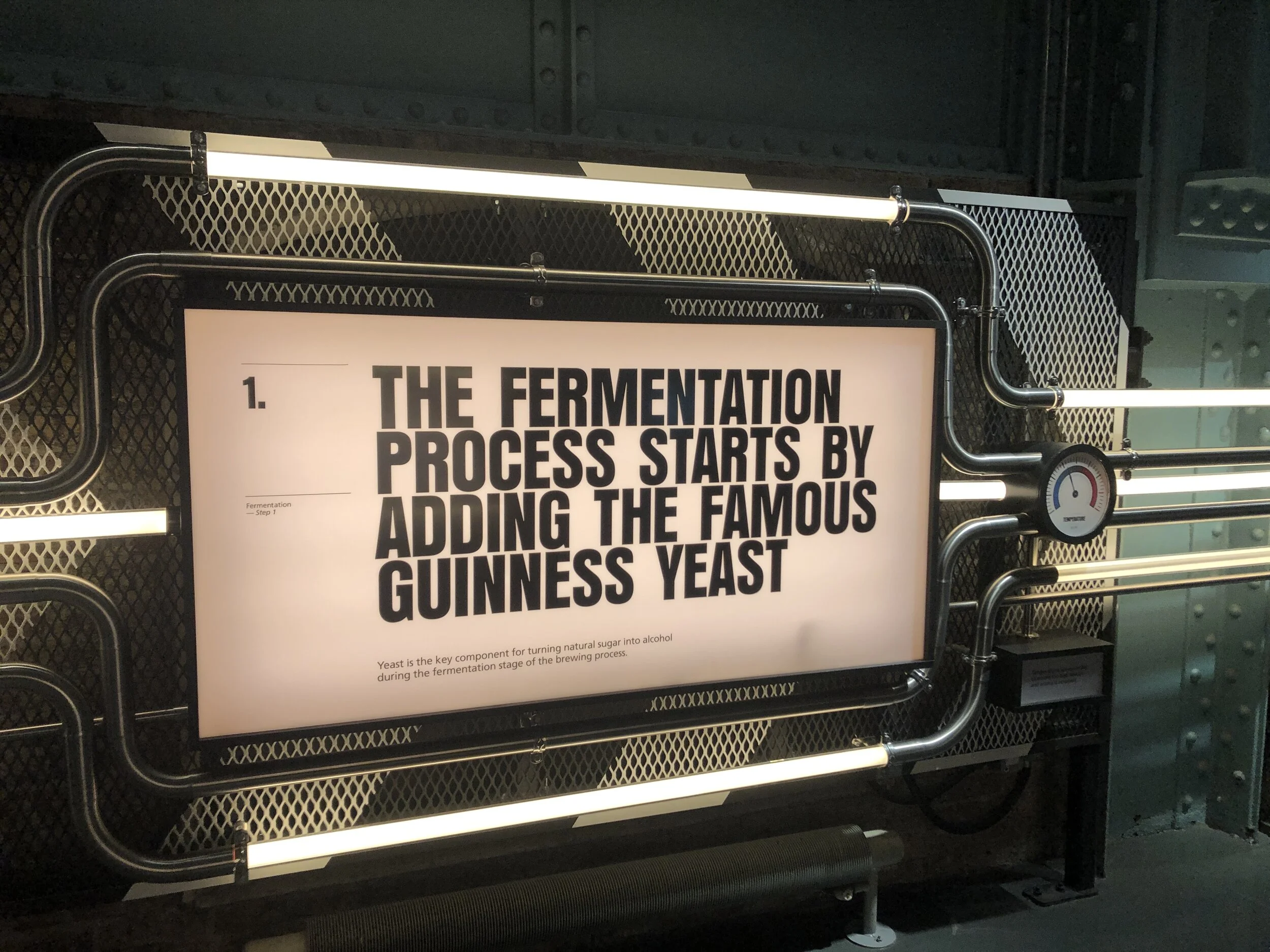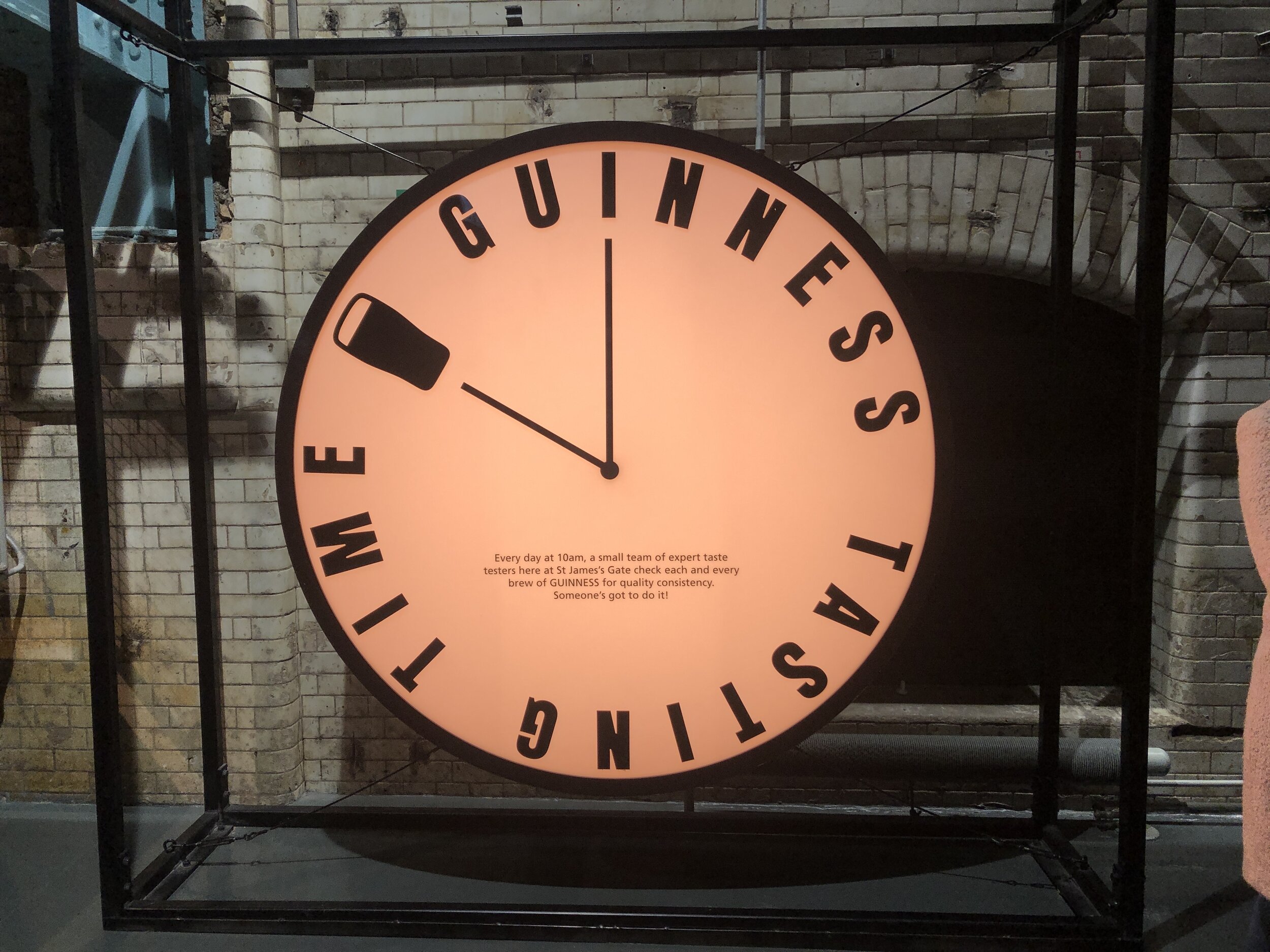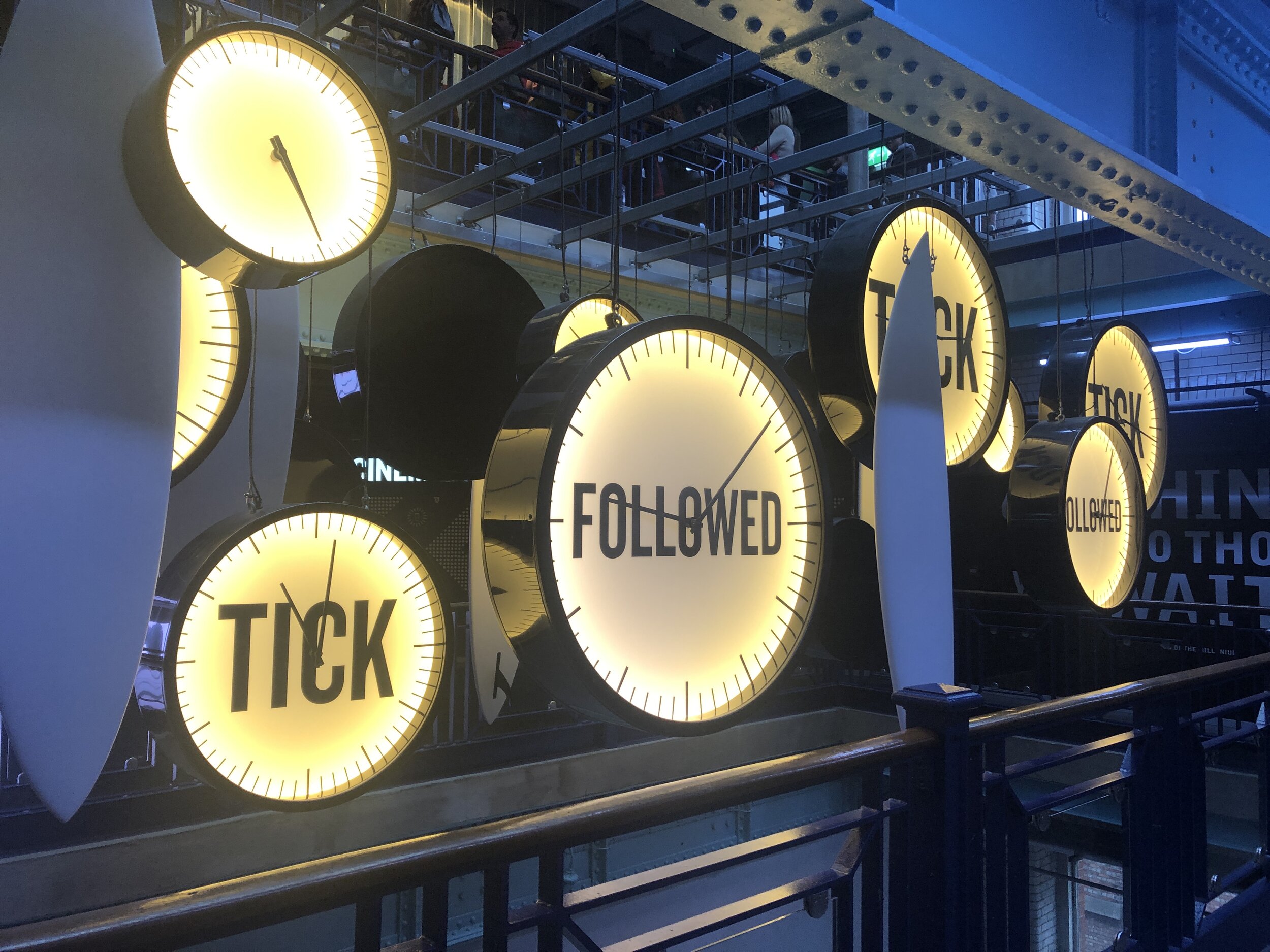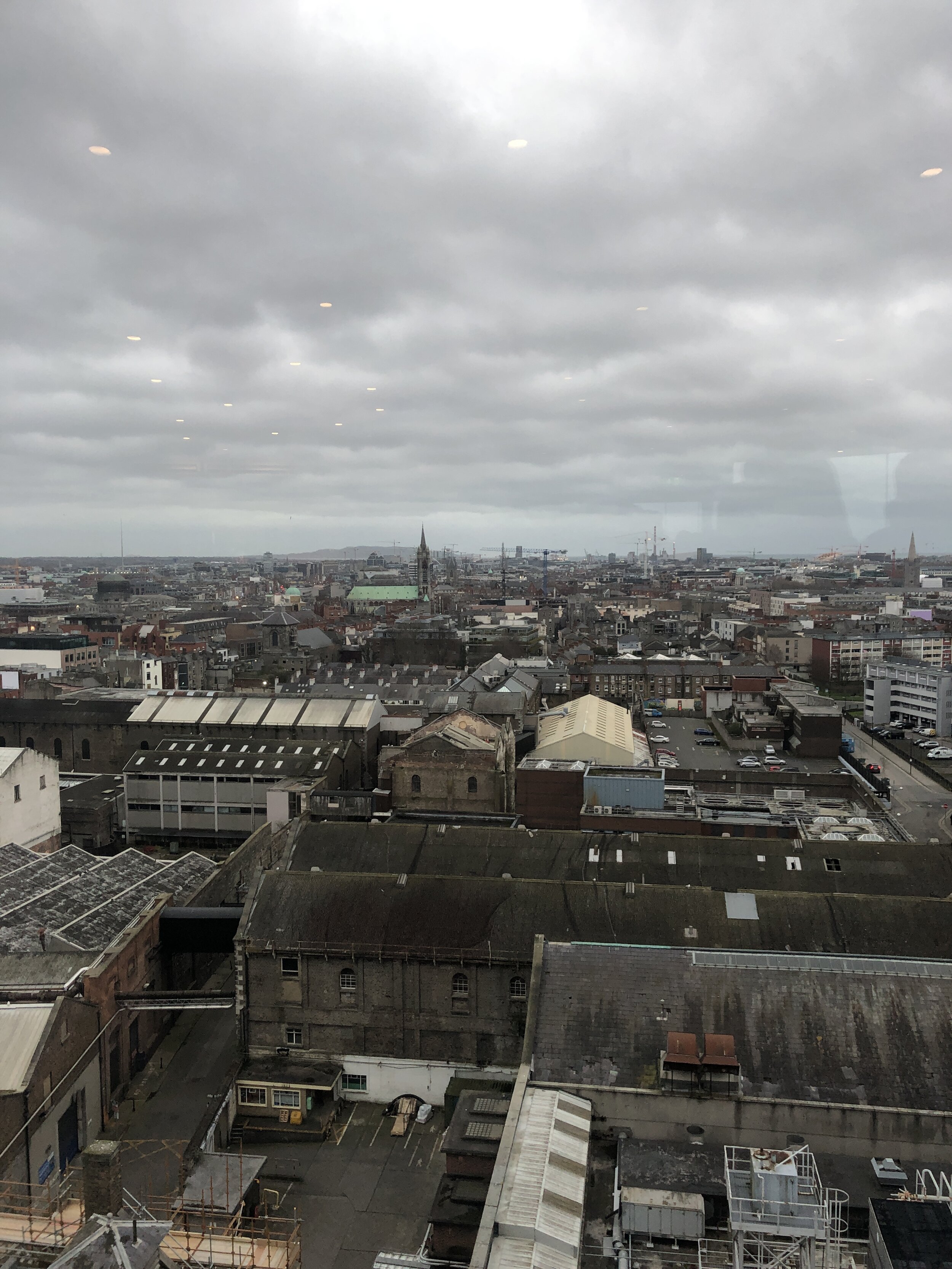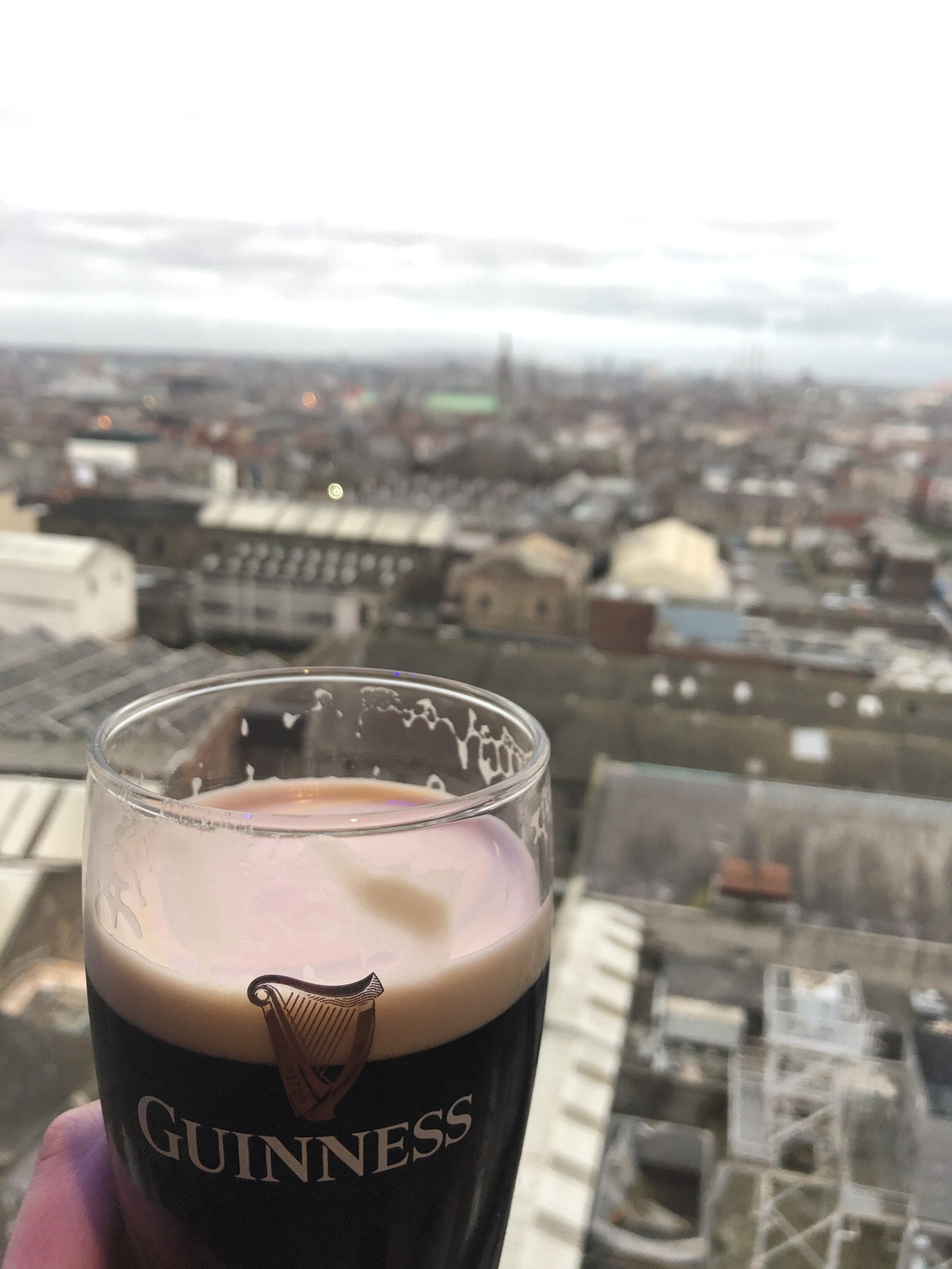How can I live in Ireland as an expat without writing a guide to Guinness? Exactly, I can’t. Guinness is the most famous Irish beer and I know quite a few people who are not the biggest fans of it. Speaking out of my own experience, however, I can say - it truly does taste better in Ireland. And since the Guinness Storehouse is one of the top things to do in Dublin, you should definitely book a tour and have a lovely pint of Guinness while you’re there. Or make sure to stop in a pub or two! In order for you to be prepared, I have written my very own guide to Guinness!
The History of Guinness
With the 100 pounds he inherited from his granddad, Arthur Guinness opened a brewery in Co. Kildare in 1752 to brew ale. In 1759 he ventured to Dublin where he signed a 9000-year lease for a property of St. James’s Gate. In 1799 he stopped brewing his original ale and focused solely on perfecting porter. By 1858, Guinness exported its beer already as far as New Zealand! Over the next couple of years, Guinness hired scientists and researchers to evolve its craft. In 1929 Guinness started its first advertisement campaigns ‘Guinness is Good for You’ and ‘My Goodness, My Guinness’ featuring pairings from painter John Gilroy. In 1951, Sir Hugh Beaver, the then managing director of the Guinness Breweries, got into an argument about the speed of two birds and which was faster. Realising, that he couldn’t be the only person trying to win an argument without having a convenient way of proving it, he had the idea of supplying a book addressing these questions. A Guinness employee recommended two friends who ran a fact-finding company in London, who commissioned the first Guinness Book of Records in 1954.
In 1963, Nigeria beca e the first country other than the UK and Ireland to brew its own Guinness. In 1988, Guinness developed the Rocket Widget, which nitrogenates canned Guinness to keep it smooth and creamy. In 1998, Guinness launched another successful advertisement campaign ‘Good things come to those who wait’. 2009 marked the 250 anniversary of Guinness with its very own celebration day - Arthur’s Day - including a worldwide toast (unfortunately, this did not become a regular thing). Today, Guinness successfully launched several new beers, including Dublin Porter, Golden Ale, Hop House Lager and West Indies Porter. If you are interested in more details and milestones, you can read more about the history of Guinness on the official Guinness website.
The Guinness Storehouse
In 2000, part of the St. James’s Gate Brewery was remodelled into the Guinness Storehouse - a seven story interactive experience. At the storehouse, you can learn how to pour the perfect pint of Guinness at the Guinness Academy (you even get a certificate) in 119.5 seconds and 6 steps. You can discover the different flavours of beer at their very own Tasting Experience, and enjoy the amazing view of Dublin with the perfect pint of Guinness at Gravity Bar. If you feel very extra, you can even get a personalised pint of Guinness with your own selfie printed onto the head (‘Stoutie’). Tickets start at 15€ and you can plan your admission time in advance.
The Irish And Their Guinness
The Irish take their Guinness very seriously. Very seriously. It is not uncommon that regulars at a certain pub will wait a while before they order a pint of Guinness off the new bar staff - they need some practice to pour the perfect pint after all. If you are not sure whether a pub offers a well-served pint of Guinness, these resources might come in handy: Guindex aims to collect data about Guinness pints across Ireland and The Guinness Advisor ranks Guinness pints from 0 to 10. My personal favorites for a good pint of Guinness in Dublin are Devitt’s of Camden Street, Ryans of Parkgate Street and Kehoes Pub.
PRACTICAL TIPS
Last but not least, here are some practical tips for having a pint of Guinness so you don’t look like a fecking eejit. Before you order a pint, have a sneaky look around the pub. Are there many people with Guinness pints? Are there many Guinness taps behind the bar? If yes, great! It looks like many people order Guinness here, which means Guinness flows regularly through the many taps. If no, well, maybe that’s not a great sign, but I mean, what can you do, you’ll order it anyways. Once the bartender hands you the pint, wait until the beer as fully set and has a nice dark colour and a creamy head.
Now down to business. Guinness, my friends, is not a beer you saintly sip or worse - slurp the head off before drinking the rest. You need to be committed. Before you have your first drink, cheer to your mates with a nice ‘Sláinte’ (‘health’ pronounced Slanj-a) or ‘Slàinte Mhath’ (‘good health’ pronounced Slanj-a-va). Then, take a big gulp so you actually break through the foam and get a taste of the beer below. You should aim for at least a quarter of the beer - as if the pint was the first drink you’ve had in years. Props if you drink the right amount of beer so that the remainder is exactly between the harp and the GUINNESS writing on the glass. Work your way through the rest with around three more gulps, leaving only four foam lines in the glass. Put down the glass, admire your work, and stare into Ireland’s bright future (the last point might have been made up by my trusted Guinness advisor, but I sure think you should give it a try).
“Our brewing methods might have been passed down since Arthur’s time, but they never stop evolving. We’ve got a lot more beer to brew.”
Have you ever had a pint of Guinness? Are you a fan?
Kate recommends: I recommend reading a copy of Niall Williams This is Happiness with your pint of Guinness. Because if drinking Guinness in a pub in Ireland isn’t happiness, I don’t know what is. In his novel, Williams writes about a small Irish parish that hasn’t changed much over the year. The reader follows the 17-year old Noel Crowe through the idiosyncrasies and traditions, and the failures and triumphs of his town. The language is quite lyrical and uses the whole story is just as Irish as it can get. Sláinte.
